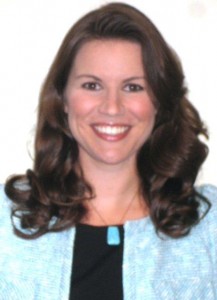JEFFERSON CITY, Mo. — With a fresh push at re-examining how public school teachers are evaluated and a new state Supreme Court ruling on school choice, education reformers across the state are eying the upcoming year as a major turning point for public education.
For the state’s unaccredited districts like Normandy and Riverview in the St. Louis area and the Kansas City school district, students now are able to transfer to neighboring districts with accreditation on the failing district’s dime, thanks to the court’s ruling.
“The State Supreme Court has now ruled on this twice,” said Katie Casas, State Director for the Children’s Education Alliance. “So there’s a pretty clear message that this is what the law is: you have to give kids in failing districts the choice to access high quality education in a neighboring district.”

While Casas said the organization was “thrilled” with the ruling, she said their primary concern was enforcement and the possible need for legislative action to ensure local districts comply with the ruling.
“This entire case began because a district wasn’t complying with the law,” Casas told The Missouri Times. “So this is something that, in terms of enforcement, we’ll be watching very closely and trying to determine if we need to work on some legislative actions to protect this ruling.”
Evaluations and Report Cards
Casas’ organization was one of several supporting new evaluations for schools as a whole. In particular, Casas supported a measure that would have given a letter grade to each school district around the state to inform the public about the school’s performance.
The information would have resembled a report card, where the school’s strengths and weaknesses are laid out. Casas said informing parents in a simplified way about how a school is performing will ultimately allow parents to make better decisions on which schools to attend.
“Whether you get a C or an A or an F, it’s going to inform your questions,” Casas said. “If a parent is looking for a new school because, let’s just say, they’ve got a very poor one or an unaccredited one in their district, well this would allow for that parent to have the information in a condensed and readable way.”
But the debate to grade schools has, at times, been folded into a larger debate about evaluating teachers and administrators in public schools on an annual basis. Organizations like StudentsFirst — that would call for annual performance evaluations of teachers and administrators — heavily backed legislation that failed in the House this year.

for StudentsFirst
Lea Crusey — who announced her departure from her position of State Director for StudentsFirst Monday — said the repeated defeats of legislation evaluating schools as whole as well as individual educators is largely the result of political pressure and a lack of understanding for the content of the bill.
“A lot about [teacher evaluations] was mischaracterized from the state,” Crusey told The Missouri Times. “People out there claimed we wanted to evaluate teachers based on test scores. That is such an oversimplification and misrepresentation of the language we fought for.”
Crusey and her organization back the new teacher evaluation currently being piloted by the Department of Elementary and Secondary Education in more than 100 districts throughout the state. The new program calls for a percentage of a teacher’s performance review to be based on student growth as measured by test scores, but does not state what percentage of the review must consider these factors.
“The research says anywhere from 33 to 50 percent of a teacher’s evaluation should be based on student growth and performance,” Crusey said. “We’re calling for the low end of that, 33 percent. That still leaves 67 percent of the evaluation parameters to be determined at the local level, by the local administrative mechanisms in place. This does nothing to limit local control.”
The combination of giving schools a report card-like grade system as well as the court ruling could result in thousands of Missouri children moving into new school districts, prompting activists to lean toward the Missouri General Assembly for continued attempts at legislative fixes to education.
With Crusey calling for the state to codify the new DESE evaluation system into law and Casas emphasizing the possible need for legislative action to enforce the latest court ruling, it’s likely education reform bills will continue to play a large role in the Missouri General Assembly, and be a source for major contention.
“When you talk about making changes to a system it’s important to remember that no one thing magically fixes our schools,” Casas said. “And second is to remember that every dollar we allocate for education is supposed to be for kids, not for propping up a system or a method that doesn’t work.”
Casas said a combination of reforms is required to elevate Missouri into the upper echelons of public education in the country.
Early Childhood and the Budget
While several education groups waded deep into the reform battles during the last session involving various teacher and school board organizations, the Partnership for Children quietly lobbied for more funds for education and care for children ages five and younger.
Director of Advocacy and Public Policy Erin Brower said that a well-funded Pre-K system could vastly improve education overall in the state even if no other changes were made.
“There are people out there who will tell you First Steps or Head Start doesn’t have a long-term benefit,” Brower said. “But those are people who really don’t understand the data as it exists, and don’t understand that the benefits of early childhood education are long term benefits. We’re talking 10 and 20-year investments.”

Brower said Missouri needed more funding for 3 and 4-year-olds to prevent waste in education funds. The state of Missouri spends more than $27 million annually just on children repeating Kindergarten, and children are not technically required to attend public school until the age of 7, far too old, Brower says.
“We can save money across the board if we are willing to invest in the youngest children in the state because every piece of data out there says the return on investment for Pre-K education is huge,” Brower said. “It’s not spending money, it’s investing money.”
Currently, nearly 80 percent of Missouri 4-year-old children attend no form of Pre-K education according to a study by the National Institute for Early Education Research. The same NIEER study says Missouri ranks 37th in overall spending for early childhood education.
But with the foundation formula continually underfunded and bills proposed by some legislators to cap future state spending, Brower said she and other education activists were largely “playing defense,” and trying to preserve whatever funding they could. They did support language sponsored by Sen. Joseph Keaveny, D-St. Louis, to include Pre-K education in the foundation formula. The bill received only 30 minutes of debate on the floor and was never passed.
“We need to educate our legislators that this simply has to be a priority,” Brower said. “If we continue to make funding education or allocating money for early childhood a second or third thing on our agenda, it simply won’t get done, and an entire generation of Missourians will suffer for it.”
Big Picture
Unions — including those for public school teachers — often use their Committee on Political Education (COPE) to track legislators’ voting records with regard to union issues, listing various lawmakers on a scale of being pro or anti-union.
With unions and organizations for teachers and school boards classifying evaluation votes as anti-union votes, only one-fifth of the Democrats in the Missouri House were able to support a bill that included teacher evaluations.
On the other side of the aisle, some Republicans have been wary of certain reforms that they believe remove local control from school districts, though activists say this is a misrepresentation of their legislation.
“In the case of evaluating a teacher, 67 percent of the criteria is up to the local district,” Crusey said. “And that same evaluation system DESE is piloting was completely designed within the state of Missouri. A huge number of administrators and teachers came together to formalize it.”
And despite losses for education reformers in the areas of early childhood funds and evaluations, the court’s ruling on school choice has revitalized the efforts to expand access to public education.
“We need to be providing not only the information for parents to be engaged in the choice for their child’s school,” Casas said, “but we need legislation that gives local districts the kind of flexibility they need to meet the needs of their kids. That’s how we can provide high quality education for all. The court has ruled on the issue of choice, and I think other changes are likely to come.”
[divider style=”tiny”][/divider]
The next piece in our ongoing education series on education will be in two weeks. The focus will be on rural schools throughout the states and the challenges faced by students, teachers, administrators and legislators from districts within those communities. We’ll be addressing technology deficiencies and the implementation of common core among other issues.




